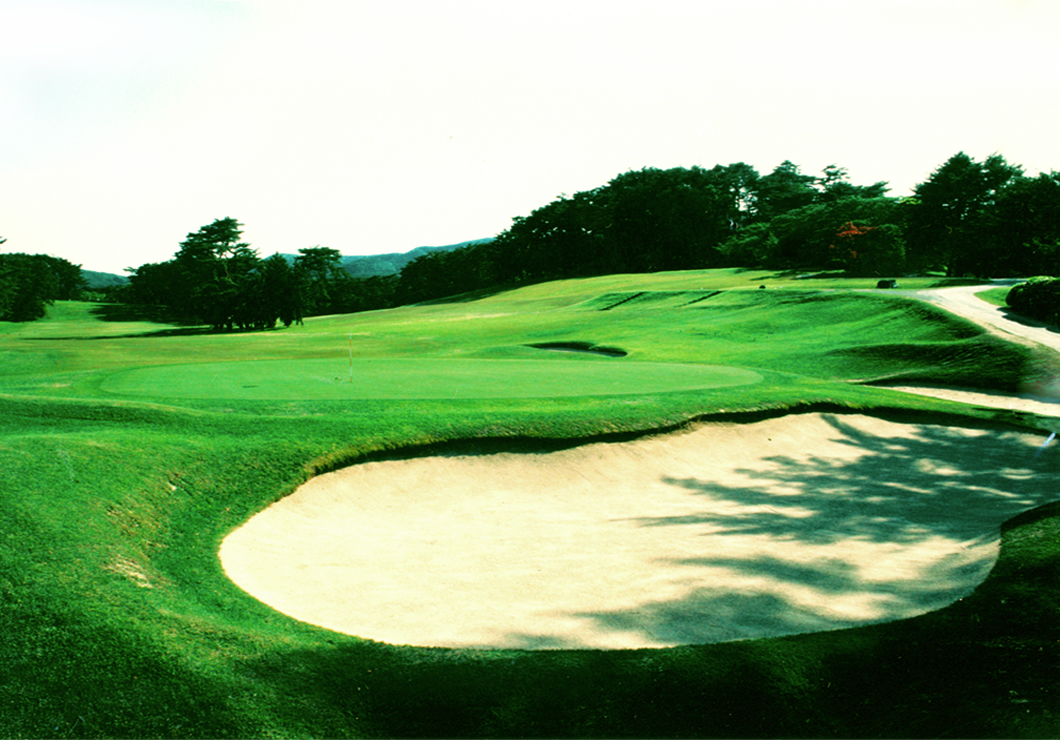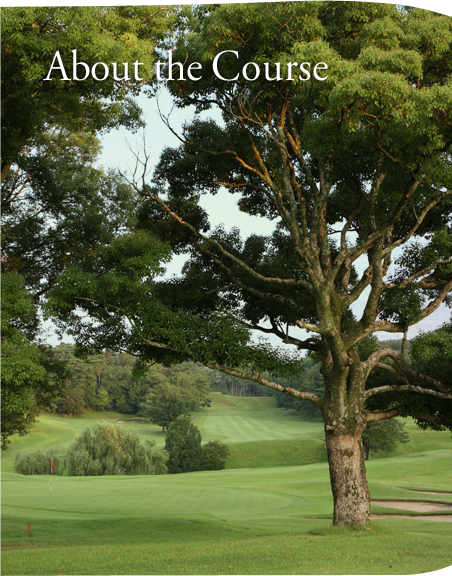




The eighteen holes at Naruo were carved out of the landscape in an age before bulldozers and power shovels. The course was built by the labour of thousands of men. Incorporating the setting’s natural topology, the course has been artistically laid out as an inspiration to everyone who comes to play the course.
But once a player takes club in hand and realizes the demands of the course in terms of strategy and shot selection, a change of attitude takes place that gives rise to a deeper respect for the course. When a course takes a player over knolls and down vales, and challenges one’s full range of skills and experience to read the wind and devise tactics employing every club in the bag, that is when golf takes its richest form and inspires a lifelong appreciation of the game. Etched on the faces of those who have just completed a journey over the 18 turbulent holes is an indescribable sense of satisfaction, sometimes mixed with a rueful desire to replay one or two of the most bittersweet moments.
1/4


The course maintenance policy at Naruo is based on preserving the course’s original classic ambience. The course was built by those who deeply loved the game and it has been maintained over the years very close to its original form through the endless passion of the Club’s members and employees.
The way the natural terrain is incorporated into the course layout is reminiscent of classic courses built in the heathland belt of England, sometimes referred to as “mountain links”.
2/4


Each of the 18 holes has its own unique character. Especially distinctive of the Naruo course are the four par-3 holes, which generally have an elevated green guarded by deep bunkers, highlighting the natural features of the landscape.
The overall design requires a player to interact with the course to reach the green. The bunkers, designed under the supervision of Charles Hugh Alison, present the final barrier. Once the barriers are finally overcome the golfer is able to stand upon the green. The greens are of the highest quality korai grass, maintaining the “original and classic” principle that is the pride of Naruo.
3/4



At one time in Japan, double greens were a major trend in golf course design. The mainstream eventually became a single green using bent grass. Naruo maintained the single-green design using korai grass through the passage of various trends. In order to maintain the course’s original design, no changes were allowed to the shape of the terrain surrounding the greens, and the Club stayed faithful to the use of korai grass, a variety especially well-suited to Japan’s climate.
Greens featuring korai grass, however, have certain characteristics that require a certain degree of accustomization. The blades of korai grass are stiff and can significantly affect how a ball rolls. The turf stands up, slowing putts more than bent grass would. Bent grass stays green all year round, but korai browns out in the winter, giving the greens a completely different character in summer and winter.
1/2


To uphold the “original and classic” policy at Naruo, the issue of getting the korai greens to offer a putting quality matching bent grass was intensively studied, and creative methods were devised that now allow the grass to be cut to about the same height as bent grass. Without using a roller, low putt-impact greens were achieved with a summer speed of 10 feet or more on the Stimpmeter.
The korai greens are not friendly to spin, so that balls will not stop easily on the greens and putts will roll differently from season to season. These built-in challenges require players to brush up their skills and eventually lead to a greater enjoyment of the game.
2/2


Charles Hugh Alison gave extremely detailed advice on every aspect of the Naruo course, as he was asked to do in 1931. Much of the advice related to the bunkers, and many new bunkers were added upon his recommendation.
Alison bunkers take advantage of the natural deformations of the land and masterfully incorporate vertical height changes that follow natural contours, with sand filled flush to the edge. All of these characteristics make their architecture clearly recognizable. In particular, the bunkers surrounding the greens extend naturally along the line of the green’s undulation, creating a unified look and feel that is typical of the high aesthetics of an Alison design.
1/2


Naruo’s bunkers were gradually deepened over the years, and the mossy areas and other natural features add even more tasteful elegance. Because the depth of the bunkers and amount of sand in them varies, each play of the course will be a new experience, adding extra flavour to your rounds and golf game.
2/2
